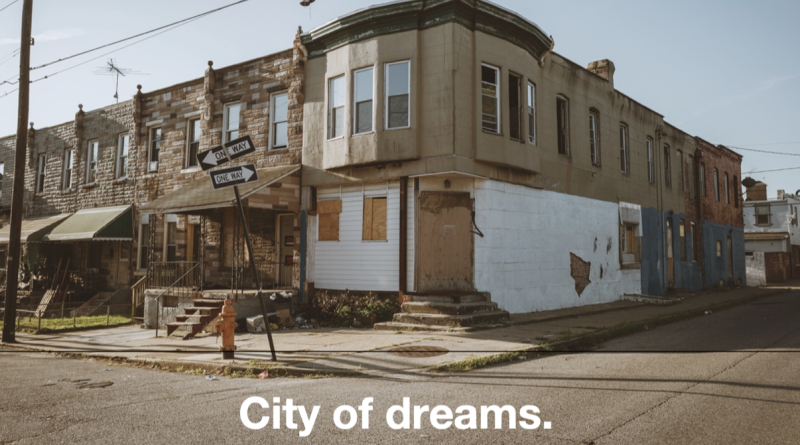Missing the Point: Time to repurpose Baltimore City’s greatest assets
To say that the city of Baltimore is in trouble is not exactly breaking news. It’s a long-term reality, a matter of fact for decades.
Round numbers, between 1950 and 2020 the population of the United States more than doubled from 159 to 331 million. Over the same 70 years, Baltimore’s population was actually falling from 950,000 to 586,000, down more than 38%. In relative terms, Baltimore City has gone from being the sixth-largest city in the country to the thirtieth, from being the largest of Maryland’s 24 counties to being the fifth – and the only one of the top 15 to have lost population (-8.74%) since 2010.
Shootings and other criminal activities are at record levels. Unemployment is way too high, mostly among the two-thirds of the city that is struggling every day to get by. The extent of “under-employment,” which is even more insidious, is unclear, but likely huge. (“Under-employment” is people working well below their potential for less than they need to make.) Public education in the city is among the worst in the state.
Against the myriad of problems causing the hot mess that Baltimore has become, the city government is lost in space. Let’s be honest. Has Baltimore City government ever proven that it knows what it’s doing when it comes to saving the city?
Not incidentally, our state government could also be more helpful. Is Baltimore City a statewide problem? Of course it is. Think of the opportunity cost to all the residents of Maryland of our having failed to return Baltimore to being a driving force behind the state’s economy and culture that it once was.
To the two-thirds of the city that struggles every day to get by, you’re being ignored. And, as for the rest of you in Baltimore, residents and employers alike, you’re not getting the return you deserve on the continuing investment you’re making in the city. Not even close. It’s hard to imagine how much more you would benefit from living in a city where everyone is doing well.
Here’s what the Mayor and City Council of Baltimore need to do:
- Get over their obsessive fixation with the downtown.
- Stop thinking in terms of short-term solutions to long-term problems.
- Stop “nickel and diming” the problem. Do you seriously think that saving a family or employer a few hundred dollars here and there is going to make up for all the city’s residential and business negatives? Of course not.
You’ve got to think in terms of far fewer, much, much bigger programs to turn Baltimore around. Baltimore needs programs that encourage widespread private sector investments not downtown, not on the perimeter of the city, but smack dab in heart of the communities whose residents need more and better paying jobs for which they qualify.
- More specifically, you need to change the way you think about two of the city’s greatest problems, widespread un- and under-employment and the city’s vast inventories of vacant and abandoned residential and commercial properties.
“What, they’re not ‘problems’ anymore?”
Okay they’re problematic alright. But, more importantly, for the purposes of economic development, they’re the city’s most valuable assets.
Think about it. More than anything, the city of Baltimore needs to provide its un- and under-employed residents jobs that not only pay enough to support them, but that will make sense in light of their current levels of education and training. Give the right incoming companies whatever incentives it takes for them to provide on-the-job training when they hire these residents – to work at the new generation factories and other workplaces these employers build on vacant and abandoned properties the city gives them.
- One more item on the list. The city’s government needs to sell, sell, sell the City of Baltimore. Don’t pitch the downtown. Forget about pictures of the harbor. Talk in compelling terms that prospective incoming working-class employers will appreciate – about the city’s hard-working, relatively affordable labor force and vast inventory of free land. It’s high time to market the crab cakes out of the city.
Bring the jobs people need to where those people live and the other problems city government is forever chasing will take care of themselves.
Who knows? For example and to stimulate further creative discussion, how about some year-round urban agriculture, turning all that vacant property green. Creating conveniently located jobs for city residents interested in careers in food production, processing and distribution – not to mention fresh vegetables in what are currently food deserts. With the generous help of the Maryland and U.S. Departments of Agriculture.
“Urban agriculture? Are you serious?”
Just sayin’. All large scale, environmentally friendly, workforce-appropriate options should be on the table.
So what do you think?

Les Cohen is a long-term Marylander, having grown up in Annapolis. Professionally, he writes and edits materials for business and political clients from his base of operations in Columbia, Maryland. He has a Ph.D. in Urban and Regional Economics. Leave a comment or feel free to send him an email to [email protected].

